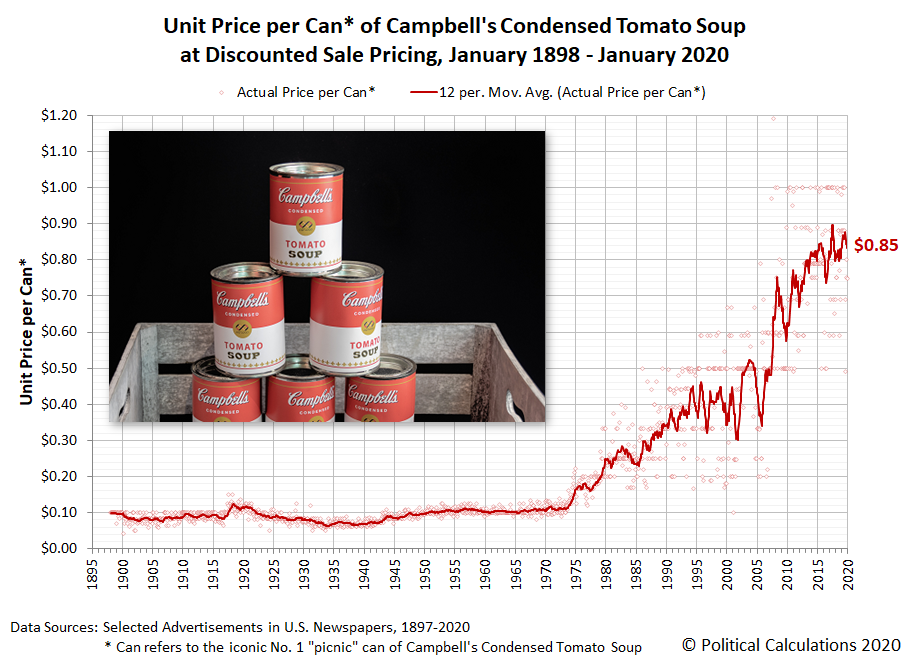It's soup season, so what better time to update our records of the historic prices Americans have paid for an iconic can of Campbell's Condensed Tomato Soup, which now span January 1898 through January 2020!
For the latest in our coverage of Campbell's Tomato Soup prices, follow this link!
As of January 2020, the average advertised sale price that Americans have paid for a 10.75 fluid ounce can of Campbell's condensed tomato soup is $0.85. Almost all of that price escalation has occurred since 10 April 1974, when the U.S. government lifted its price controls on food, where for the first 76 years of its history, Americans paid somewhere between $0.07 and $0.12 for each Number 1-size can of Campbell's Condensed Tomato Soup they bought.
If you do the math, where the average picnic-size can of Campbell's tomato soup could be bought for just $0.12 on sale as late as October 1973, that works out to an average annual rate of tomato soup inflation of about 4.3% for American consumers during the last 46+ years.
Fifteen years ago, it wasn't uncommon to see a can of Campbell's tomato soup on sale for $0.20. Today, it is becoming rare to see a sale price below $0.50 when the soup is heavily discounted, but still without having to use coupons.
Image Credit: Paweł Czerwiński
Previously on Political Calculations
Our coverage of America's most iconic soup, presented in reverse chronological order!
- Celebrating 150 Years of the Campbell's Soup Company
- Tomato Soup, Oil and Inflation
- Soup and Steel Tariffs
- Soup and Recession
- Everyday Low Prices
- Of Soup and Silver and the Zombie Apocalypse
- Updated: The Price of Campbell's Tomato Soup Since 1897
- Early Advertising Milestones for Campbell's Condensed Soups
- The First Ad Ever for Campbell's Condensed Soups?
- War and Soup
- The Tomato Soup Standard
- The Price of Campbell's Tomato Soup Since 1897
Labels: business, data visualization, economics, inflation, soup
Welcome to the blogosphere's toolchest! Here, unlike other blogs dedicated to analyzing current events, we create easy-to-use, simple tools to do the math related to them so you can get in on the action too! If you would like to learn more about these tools, or if you would like to contribute ideas to develop for this blog, please e-mail us at:
ironman at politicalcalculations
Thanks in advance!
Closing values for previous trading day.
This site is primarily powered by:
CSS Validation
RSS Site Feed
JavaScript
The tools on this site are built using JavaScript. If you would like to learn more, one of the best free resources on the web is available at W3Schools.com.
